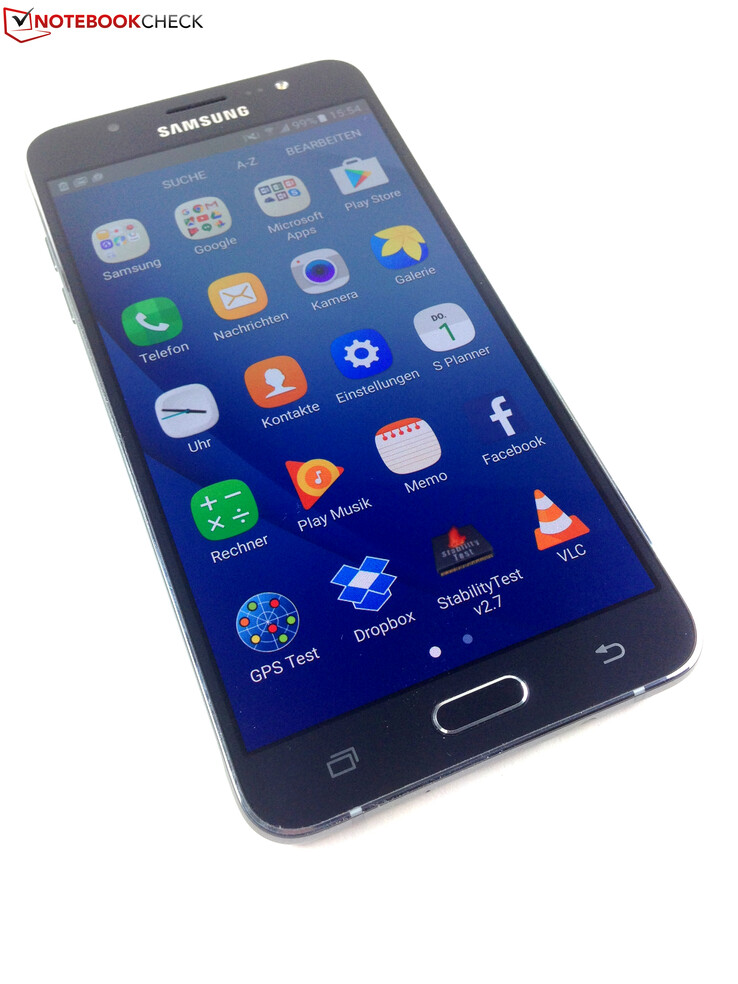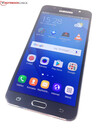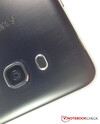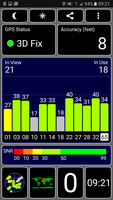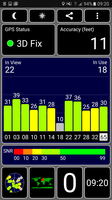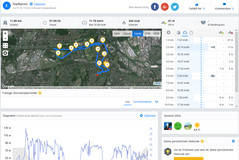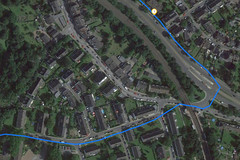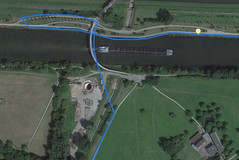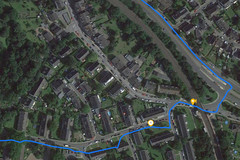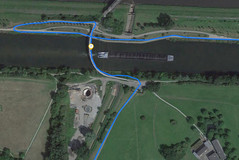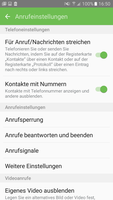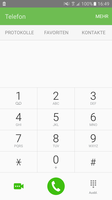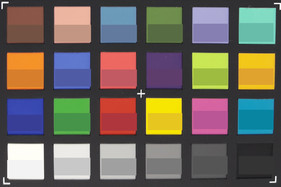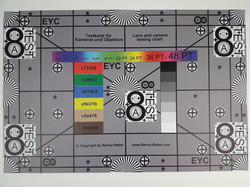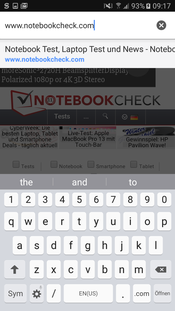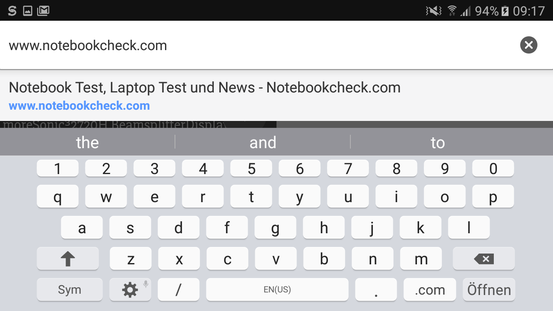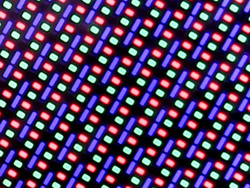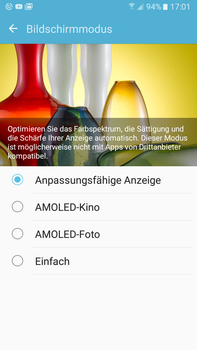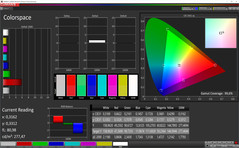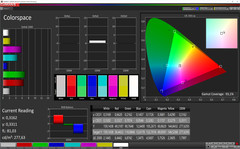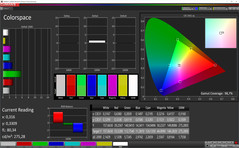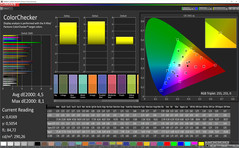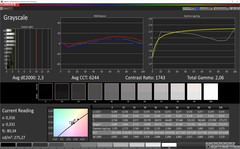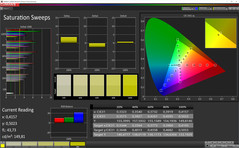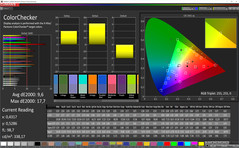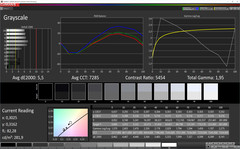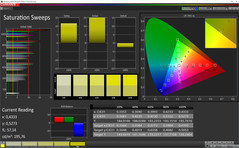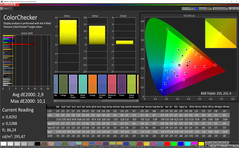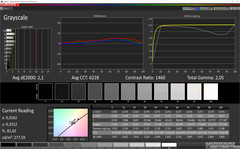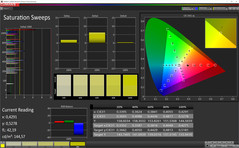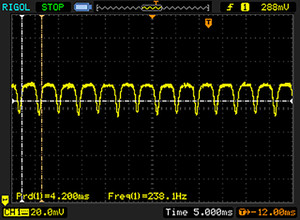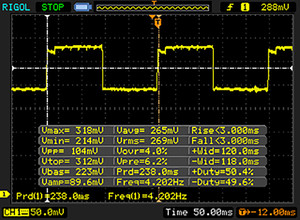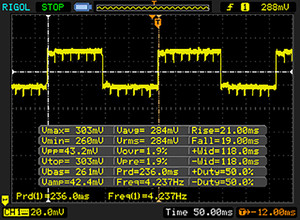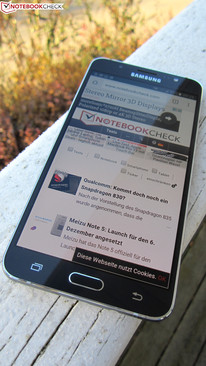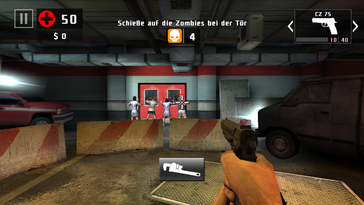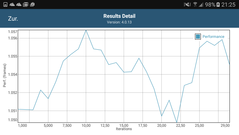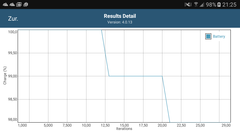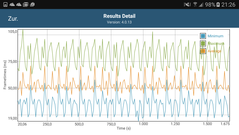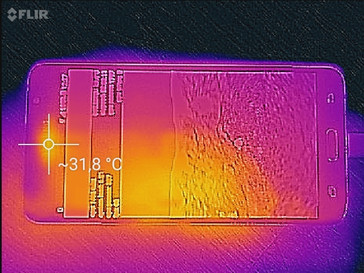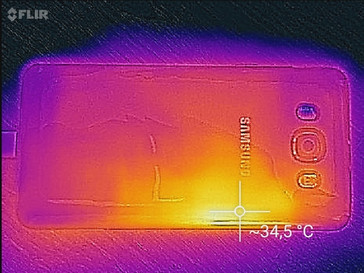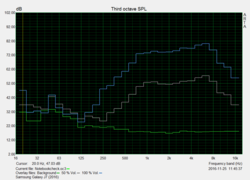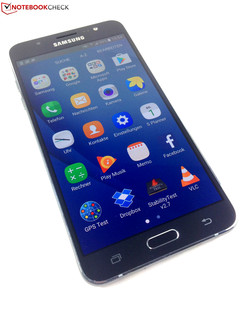Samsung Galaxy J7 (2016) Smartphone Review

For the original German review, see here.
Samsung has overhauled its mid-range smartphone, the Galaxy J7, which was only released in 2015. In order to avoid confusion with the predecessor, the 2016 version has the year in its name, just like the new edition of its sister model, the Samsung Galaxy J5 (2016). The manufacturer has not changed the underlying direction: Like its predecessor, officially priced at 260 Euros (~$277), the more or less equally priced Samsung Galaxy J7 (2016) aims to appeal to selfie enthusiasts in particular, with its 13 MP rear camera and 5 MP front camera.
Overall, Samsung has gone easy on the upgrade and by not completely reinventing the Galaxy J7, except for the internals. Instead of the octa-core Snapdragon 615 SoC with structures of 28 nm, the 2016 Galaxy J7 uses Samsung's own and more powerful Exynos 7870 Octa (structures of 14 nm) and comes with 2 instead of 1.5 GB of RAM. The battery has also got a small upgrade, with the capacity rising to 3300 mAh. The control center is no longer Android 5.1, but Android 6.0.1 Marshmallow.
An alternative to the Samsung Galaxy J7 (2016) is the 5.2-inch Samsung Galaxy J5 (2016): It uses the same camera modules, also has a Super AMOLED display with HD resolution, and the same metal and plastic chassis. However, the battery is slightly smaller (3100 mAh) and the SoC (Qualcomm Snapdragon 410 MSM8916) is slower - this results in a saving of about 50 Euros (~$53) compared to the Samsung Galaxy J7 (2016).
Is the Galaxy J7 (2016) worth the higher price? Let us find out. In our review, the Galaxy J7 (2016) will compete with similarly priced and specced rivals: Included are the Honor 5X, the Huawei P9 Lite and the Sony Xperia XA. The Samsung Galaxy J5 (2016) is of course also part of the comparison.
Case
If you put the 5.5-inch Samsung Galaxy J7 and Galaxy J7 (2016) smartphones next to each other, it is very easy to confuse them, since they both have the same case design. However, on closer inspection, you can see that the Galaxy J7 (2016) is slightly slimmer than its predecessor (7.6 instead of 7.9 mm//~0.3 instead of 0.31 in).
But as soon as you pick the phones up, a big difference is noticeable. Because the chassis of the Galaxy J7 (2016) is made of an aluminum frame and plastic back, it feels significantly more premium than the completely plastic Galaxy J7. The metal frame also makes the case very solid, which was, in our test, practically immune to bending and twisting of any sort. The metal frame does not have a negative impact on the weight; according to the specification sheet, the test candidate weighs 169 grams (~6 oz), and so only one gram more than the Galaxy J7. The removable back cover conceals the replaceable 3330 mAh battery, as well as a Micro SIM and a microSD card slot. A clear comparison of the two cases can be found on YouTube, for example.
Aside from our black review unit, Samsung also offers the Galaxy J7 (2016) in gold and white.
Connectivity
The octa-core Samsung Exynos 7870 Octa SoC works inside the Samsung Galaxy J7 (2016), and its Cortex-A53 cores are clocked at 1.6 GHz. An ARM Mali-T830 MP2 graphics adapter integrated into the mid-range SoC provides a solid gaming performance in our test.
Android 6.0.1 and preinstalled apps occupy slightly more than 5 GB of the 16 GB storage, so our review unit has about 10.6 GB left. The internal storage can be easily expanded with microSD cards, which can go up to 128 GB and are formatted as mobile storage. The applications we installed later could not all be moved to a microSD card, but games such as “Asphalt 8: Airborne” and “Dead Trigger 2” could be moved.
The micro USB port supports only 2.0 speeds, but it is capable of USB-OTG. NFC joins the package as a wireless connection.
Software
The Samsung Galaxy J7 (2016) runs on Android 6.0.1 Marshmallow and thus one of the more current Android versions - it is certainly more in tune with the times than Android 5.1 running on its predecessor. Samsung has laid its TouchWiz skin over the operating system, which only cautiously intrudes into standard Android. This includes a softer look with rounded buttons and logos, as well as a somewhat differently structured settings menu. If you scroll to the far left on the home screen, you reach the news aggregator "Briefing", which can be configured individually.
In terms of preinstalled apps, in addition to Microsoft's Office Suite and Google apps, there are also proprietary tools such as the health app "S Health" and the calendar "S Planner". All in all, Samsung has restrained itself from adding too many software additions, which is nice. Still, they cannot be uninstalled, only deactivated at best.
Communication and GPS
With a Micro SIM card and a suitable mobile plan on board, the Samsung Galaxy J7 (2016) can communicate over four GSM, four UMTS, and seven LTE bands/frequencies. This does not necessarily mean that you will find a cellular network everywhere in the world, but there should not be any problems in the European zone, since the phone covers all the important local frequencies and LTE bands. Download speeds can reach up to 150 MBit/s, upload speeds can go up to 50 MBit/s.
The Samsung Galaxy J7 (2016) transfers data over WLAN via the 802.11 b/g/n standards. Since 802.11a is missing, the smartphone does not connect to 5 GHz networks. Data transfers on the 2.4 GHz frequency of our Linksys EA8500 test router run flawlessly and with consistent speed, but they are not particularly fast at a maximum of 43.1 MBit/s.
| Networking | |
| iperf3 transmit AX12 | |
| Samsung Galaxy J7 2016 | |
| iperf3 receive AX12 | |
| Samsung Galaxy J7 2016 | |
The GPS module of the Galaxy J7 (2016) pinpoints your current location precisely within a few metres in buildings as well as outside. In our field test, where we take a 12 km (~7.5 mi) bike ride and compare the smartphone's GPS with the localisation skills of the professional Garmin Edge 500 navigation device, the smartphone did not fare so well after all. For example, the Galaxy J7 (2016) sometimes takes rigorous shortcuts through the woods or positions us several meters away from the path, meaning that the total measured distance ends up with a difference of almost 700 meters (~766 yd). This is still sufficiently precise for everyday use, but many rivals offer considerably more precision, including the Samsung Galaxy J5 (2016).
Telephone Functions and Voice Quality
Samsung's subtle redesign of the Android operating system also includes the phone app. It is uncluttered and offers a large keypad for dialling numbers. In addition, there are tabs for logs of received and outgoing calls, favorites and contacts.
The voice quality is not convincing. In our test calls, we or the voice of our conversation partner always sound somewhat muffled. The built-in speaker sounds relatively fine during calls, but it is prone to distortion at high volumes.
Cameras
With a 13 MP rear camera and a 5 MP front camera, the Samsung Galaxy J7 (2016) has up-to-date cameras. We suspect that it has the same camera module as its smaller sibling, the Galaxy J5 (2016), because system information apps such as AIDA64 identify both rear camera sensors as "SLSI_S5K3L2", a CMOS sensor made by Samsung.
The rear camera, which has an LED flash, takes good pictures in daylight, although the darker areas of the pictures are relatively weakly illuminated, despite a fast F1.9 aperture. Pictures taken in darker surroundings tend to become blurry quite quickly. Casual photographers should be content with the picture quality, though. The camera can record 1080p videos with 30 fps. The quality is decent, even though the pictures occasionally seem slightly dark.
The 5 MP front camera is completely focused on selfies. Aside from facial recognition and a selfie mode, it offers a "Group Selfie" mode and an interval record function for consecutive images. In "Sound & Shot" mode it can also record background noise. There is also a timer function, and "Sepia", "Negative" and "Grayscale" filters. The front LED can be turned on in the picture settings in order to obtain better lighting conditions - selfies are then possible even in dark surroundings. As the pictures are sharp and vivid, the front camera delivers good image quality.
In addition to our test shots, we also test the sharpness and colors under controlled lighting conditions. For this we take a picture of the ColorChecker passport and our test chart. We do not edit the pictures. Colors reproduced by the Galaxy J7 (2016) are a touch too strong and bright. The test chart is sharp in the middle, but the brightness and sharpness decrease towards the edges. However, this can also happen with professional cameras.
Accessories and Warranty
Samsung provides the Galaxy J7 (2016) with a 3300 mAh lithium-ion battery, a modular power supply, a micro USB 2.0 cable as well as headphones. At the time of writing, the manufacturer does not offer any accessories for this smartphone.
The Galaxy J7 (2016) comes with 24 months of warranty, the battery with a one-year warranty, and the rest of the accessories in the box with 6 months of warranty.
Please see our Guarantees, Return Policies & Warranties FAQ for country-specific information.
Input Devices and Handling
Samsung has integrated its own keyboard into the Android user interface. The keys have turned out slightly smaller than on the standard keyboard, but Samsung's keyboard also has a row with the number keys on top and supports useful functions such as speech input and swiping. An optional contrast mode colors the letters black and the keyboards's background a bright yellow-orange - it does not win any design prizes, but it is more legible. If Samsung's keyboard does not suit you, you can of course always install new keyboards from the Google Play Store.
The Galaxy J7 (2016)'s AMOLED touchscreen can register up to 10 fingers simultaneously, does not resist the fingers too much, and works precisely even in the remotest corners. We also liked the physical buttons, which include a home button on the Galaxy J7 (2016) as well as on the Galaxy J5 (2016). They sit firmly in the case without wobbling and give precise feedback due to their crisp pressure point.
Display
The Samsung Galaxy J7 (2016) is equipped with a Super AMOLED display with a resolution of 1280x720 pixels and thus a pixel density of 267 PPI. Because of its technology, it offers advantages such as a theoretically unlimited high contrast ratio, because the black pixels are turned off and therefore are not lit. Subjectively, the display produces a flawless image with very vivid colors.
On average, the Galaxy J7 (2016) reaches a brightness of 291.2 cd/m² with an entirely white background. This can be increased under the display setting "Outdoor mode" for using it outside, reaching up to 413 cd/m². If we take the even and thus more realistic distribution of bright and dark screen areas as the basis (APL50), the luminance increases to 596 cd/m². The brightness distribution of 91% is very even.
However, there is one small flaw: As with the sister model, the Galaxy J5 (2016), we notice screen flickering on our test candidate. Sensitive users can perceive it on the Galaxy J7 (2016) if the brightness is set to 40% or lower.
| |||||||||||||||||||||||||
Brightness Distribution: 91 %
Center on Battery: 287 cd/m²
Contrast: ∞:1 (Black: 0 cd/m²)
ΔE Color 2.9 | 0.5-29.43 Ø5
ΔE Greyscale 2.1 | 0.57-98 Ø5.3
Gamma: 2.05
| Samsung Galaxy J7 2016 Super AMOLED, 1280x720, 5.50 | Honor 5X IPS, 1920x1080, 5.50 | Huawei P9 Lite IPS, 1920x1080, 5.20 | Sony Xperia XA IPS, 1280x720, 5.00 | Samsung Galaxy J5 2016 AMOLED, 1280x720, 5.20 | |
|---|---|---|---|---|---|
| Screen | -7% | 1% | -41% | -12% | |
| Brightness middle | 287 | 535 86% | 505 76% | 518 80% | 289 1% |
| Brightness | 289 | 521 80% | 468 62% | 475 64% | 291 1% |
| Brightness Distribution | 91 | 85 -7% | 88 -3% | 81 -11% | 96 5% |
| Black Level * | 0.43 | 0.74 | 0.61 | ||
| Colorchecker dE 2000 * | 2.9 | 4.88 -68% | 4.1 -41% | 6.8 -134% | 4.7 -62% |
| Colorchecker dE 2000 max. * | 10.1 | 8.66 14% | 5.8 43% | 11.4 -13% | 7.3 28% |
| Greyscale dE 2000 * | 2.1 | 5.2 -148% | 4.9 -133% | 7 -233% | 3 -43% |
| Gamma | 2.05 107% | 2.26 97% | 2.5 88% | 2.35 94% | 2.03 108% |
| CCT | 6228 104% | 7766 84% | 7116 91% | 8151 80% | 6291 103% |
| Contrast | 1244 | 682 | 849 |
* ... smaller is better
The Galaxy J7 (2016) comes with four display modes to choose from, with which you can adjust the color reproduction individually. In the preset mode "Adaptive display", the smartphone automatically optimizes the image parameters such as the color spectrum, the saturation and the sharpness. There is also an "AMOLED cinema", "AMOLED photo" and "Simple" mode. The "AMOLED cinema" mode produces the most vibrant colors, "AMOLED photo" has slightly less vibrant colors, and in the "Simple" mode, colors appear almost pale, but also the most natural.
When it comes to the precision of mixed colors, an analysis with the analysing software CalMAN and the photo spectrometer shows that the "Simple" and "AMOLED photo" mode do not deviate too much from the ideal levels, with the "AMOLED photo" mode having a slight advantage. As expected, the "AMOLED cinema" mode is the furthest from a neutral reproduction, as it displays the most vibrant colors of all.
Screen Flickering / PWM (Pulse-Width Modulation)
| Screen flickering / PWM detected | 238.1 Hz | ||
The display backlight flickers at 238.1 Hz (worst case, e.g., utilizing PWM) . The frequency of 238.1 Hz is relatively low, so sensitive users will likely notice flickering and experience eyestrain at the stated brightness setting and below. In comparison: 53 % of all tested devices do not use PWM to dim the display. If PWM was detected, an average of 17900 (minimum: 5 - maximum: 3846000) Hz was measured. | |||
Display Response Times
| ↔ Response Time Black to White | ||
|---|---|---|
| 6 ms ... rise ↗ and fall ↘ combined | ↗ 3 ms rise | |
| ↘ 3 ms fall | ||
| The screen shows very fast response rates in our tests and should be very well suited for fast-paced gaming. In comparison, all tested devices range from 0.1 (minimum) to 240 (maximum) ms. » 13 % of all devices are better. This means that the measured response time is better than the average of all tested devices (21.5 ms). | ||
| ↔ Response Time 50% Grey to 80% Grey | ||
| 40 ms ... rise ↗ and fall ↘ combined | ↗ 21 ms rise | |
| ↘ 19 ms fall | ||
| The screen shows slow response rates in our tests and will be unsatisfactory for gamers. In comparison, all tested devices range from 0.2 (minimum) to 636 (maximum) ms. » 56 % of all devices are better. This means that the measured response time is worse than the average of all tested devices (33.7 ms). | ||
Despite the AMOLED display's average brightness of 291.2 cd/m², which is not very impressive, it is perfectly suitable for outdoor use. Furthermore, the Galaxy J7 (2016) has another ace up its sleeve: the optional "Outdoor" mode that makes the display viewable even in very bright environments. First, the screen's brightness is greatly increased for 15 minutes. Then the mode remains turned on until it is deactivated or the screen is turned off. Of course, the "Outdoor" mode takes a toll on the battery life, but this should be rather negligible considering this phone's long-distance running qualities.
The Galaxy J7 (2016) also has a winning hand when it comes to viewing angles. Regardless of how flat your viewing angle is, the contents on the screen are always shown without any color or brightness shifts.
Performance
Samsung has equipped the new edition of its mid-range smartphone with the octa-core Samsung Exynos 7870 Octa SoC, which makes use of a 14 nm production technique and whose Cortex-A53 cores are clocked at a frequency of up to 1.6 GHz. The SoC makes use of 2 GB LPDDR3-RAM and is supported by the ARM Mali-T830 MP2 in its graphics calculations.
As expected, the Galaxy J7 (2016) achieves better results in synthetic benchmarks than the Galaxy J5 (2016), which is equipped with a slightly less powerful processor. Our test candidate has even enough power to outperform the Honor 5X. However, it cannot match the performance of the Huawei P9 Lite and the Sony Xperia XA.
| AnTuTu v6 - Total Score (sort by value) | |
| Samsung Galaxy J7 2016 | |
| Honor 5X | |
| Huawei P9 Lite | |
| Sony Xperia XA | |
| Samsung Galaxy J5 2016 | |
| Geekbench 4.0 | |
| 64 Bit Single-Core Score (sort by value) | |
| Samsung Galaxy J7 2016 | |
| 64 Bit Multi-Core Score (sort by value) | |
| Samsung Galaxy J7 2016 | |
| GFXBench (DX / GLBenchmark) 2.7 | |
| T-Rex Onscreen (sort by value) | |
| Samsung Galaxy J7 2016 | |
| Honor 5X | |
| Huawei P9 Lite | |
| Sony Xperia XA | |
| Samsung Galaxy J5 2016 | |
| 1920x1080 T-Rex Offscreen (sort by value) | |
| Samsung Galaxy J7 2016 | |
| Honor 5X | |
| Huawei P9 Lite | |
| Sony Xperia XA | |
| Samsung Galaxy J5 2016 | |
| GFXBench 3.0 | |
| on screen Manhattan Onscreen OGL (sort by value) | |
| Samsung Galaxy J7 2016 | |
| Honor 5X | |
| Huawei P9 Lite | |
| Sony Xperia XA | |
| Samsung Galaxy J5 2016 | |
| 1920x1080 1080p Manhattan Offscreen (sort by value) | |
| Samsung Galaxy J7 2016 | |
| Honor 5X | |
| Huawei P9 Lite | |
| Sony Xperia XA | |
| Samsung Galaxy J5 2016 | |
| GFXBench 3.1 | |
| on screen Manhattan ES 3.1 Onscreen (sort by value) | |
| Samsung Galaxy J7 2016 | |
| Huawei P9 Lite | |
| Sony Xperia XA | |
| Samsung Galaxy J5 2016 | |
| 1920x1080 Manhattan ES 3.1 Offscreen (sort by value) | |
| Samsung Galaxy J7 2016 | |
| Huawei P9 Lite | |
| Sony Xperia XA | |
| Samsung Galaxy J5 2016 | |
| PCMark for Android - Work performance score (sort by value) | |
| Samsung Galaxy J7 2016 | |
| Honor 5X | |
| Huawei P9 Lite | |
| Sony Xperia XA | |
| Samsung Galaxy J5 2016 | |
The results of the browser tests put the smartphones in the same order as the synthetic benchmarks: At the top, the Huawei P9 Lite and the Sony Xperia XA, this time, however, closely followed by the Galaxy J7 (2016). The Honor 5X and the Galaxy J5 (2016) finish last.
| Octane V2 - Total Score (sort by value) | |
| Samsung Galaxy J7 2016 | |
| Honor 5X | |
| Huawei P9 Lite | |
| Sony Xperia XA | |
| Samsung Galaxy J5 2016 | |
| Mozilla Kraken 1.1 - Total (sort by value) | |
| Samsung Galaxy J7 2016 | |
| Honor 5X | |
| Huawei P9 Lite | |
| Sony Xperia XA | |
| Samsung Galaxy J5 2016 | |
| WebXPRT 2015 - Overall (sort by value) | |
| Samsung Galaxy J7 2016 | |
| Honor 5X | |
| Huawei P9 Lite | |
| Sony Xperia XA | |
| Samsung Galaxy J5 2016 | |
| JetStream 1.1 - Total Score (sort by value) | |
| Samsung Galaxy J7 2016 | |
| Honor 5X | |
| Huawei P9 Lite | |
| Sony Xperia XA | |
| Samsung Galaxy J5 2016 | |
* ... smaller is better
The read/write speed of the Galaxy J7 (2016) is solid. Sequential reading achieves the fastest data transfer speeds at 189.4 MB/s, while the speed indicator stops at 46.2 MB/s during sequential writing. The competition manages this slightly better, led by the Honor 5X and the Galaxy J5 (2016). Pretty much all smartphones are on par when it comes to random read and write speeds of 4 KB data blocks. Only the Huawei P9 Lite can pull ahead a little.
The Galaxy J7 (2016) occupies the first spot in terms of reading and writing to a microSD card. Our reference card, the Toshiba Exceria Pro M401 (read up to 95 MB/s, write up to 80 MB/s) does not reach its limits with this smartphone. With 75.5 MB/s and 58.2 MB/s sequential read/write speeds, respectively, the Samsung smartphone still beats its in-house rival, the Galaxy J5 (2016), and the Sony Xperia XA.
| Samsung Galaxy J7 2016 | Honor 5X | Huawei P9 Lite | Sony Xperia XA | Samsung Galaxy J5 2016 | |
|---|---|---|---|---|---|
| AndroBench 3-5 | 5% | 16% | 11% | 5% | |
| Sequential Read 256KB | 189.4 | 144 -24% | 283.5 50% | 240.4 27% | 147 -22% |
| Sequential Write 256KB | 46.24 | 78 69% | 46.24 0% | 68.6 48% | 72 56% |
| Random Read 4KB | 22.33 | 17 -24% | 38.22 71% | 22.05 -1% | 21 -6% |
| Random Write 4KB | 10.11 | 10 -1% | 15.35 52% | 10.6 5% | 11.6 15% |
| Sequential Read 256KB SDCard | 75.5 | 60.8 -19% | 72.9 -3% | 79.8 6% | |
| Sequential Write 256KB SDCard | 58.2 | 25.1 -57% | 50.7 -13% | 46.61 -20% |
Games
Playing games on the Galaxy J7 (2016) is fun. In the first place, the controls on the touchscreen and the position sensor work flawlessly and accurately. Secondly, the ARM Mali-T830 MP2 graphics chip ensures that even demanding games such as “Asphalt 8: Airborne” or “Dead Trigger 2” can be played smoothly. Both games run at a stable 30 fps in our test, even with the graphic details turned all the way up.
| Asphalt 8: Airborne | |||
| Settings | Value | ||
| high | 30 fps | ||
| very low | 30 fps | ||
| Dead Trigger 2 | |||
| Settings | Value | ||
| high | 30 fps | ||
Emissions
Temperature
With a peak value of 31 °C (~88 °F) under full load, the Galaxy J7 (2016) does not really have any heat development to speak of. After an hour of running our stress test, the average operating temperature of the smartphone rises to only 29.4 °C (~85 °F). The Galaxy J7 (2016) does not use any dirty tricks such as throttling for this, as our test run with the GFXBench battery benchmark shows. Even after running the T-Rex benchmark 30 times, the frame rate stays consistently high.
(+) The maximum temperature on the upper side is 30.1 °C / 86 F, compared to the average of 35 °C / 95 F, ranging from 21.9 to 56 °C for the class Smartphone.
(+) The bottom heats up to a maximum of 31 °C / 88 F, compared to the average of 33.8 °C / 93 F
(+) In idle usage, the average temperature for the upper side is 29 °C / 84 F, compared to the device average of 32.7 °C / 91 F.
Speakers
The mono speaker on the back produces an acceptable sound for a smartphone and can be heard well even if the smartphone is lying on the table, since the rear camera protrudes slightly from the case. The sound quality of the speaker fits into the line-up of many smartphone speakers that have overly prominent highs and practically ban all bass sounds from its sound spectrum. With 88 dB(A), it can get quite loud, though, and there is no sound distortion even at maximum volume.
Samsung Galaxy J7 2016 audio analysis
(+) | speakers can play relatively loud (87.5 dB)
Bass 100 - 315 Hz
(-) | nearly no bass - on average 32.7% lower than median
(±) | linearity of bass is average (10.2% delta to prev. frequency)
Mids 400 - 2000 Hz
(±) | reduced mids - on average 5.8% lower than median
(+) | mids are linear (6.1% delta to prev. frequency)
Highs 2 - 16 kHz
(±) | higher highs - on average 7% higher than median
(+) | highs are linear (5.5% delta to prev. frequency)
Overall 100 - 16.000 Hz
(±) | linearity of overall sound is average (25.5% difference to median)
Compared to same class
» 58% of all tested devices in this class were better, 8% similar, 35% worse
» The best had a delta of 12%, average was 38%, worst was 134%
Compared to all devices tested
» 75% of all tested devices were better, 5% similar, 20% worse
» The best had a delta of 4%, average was 25%, worst was 134%
Samsung Galaxy J5 2016 audio analysis
(+) | speakers can play relatively loud (84.1 dB)
Bass 100 - 315 Hz
(-) | nearly no bass - on average 32.6% lower than median
(±) | linearity of bass is average (7.1% delta to prev. frequency)
Mids 400 - 2000 Hz
(±) | higher mids - on average 7.6% higher than median
(±) | linearity of mids is average (10.9% delta to prev. frequency)
Highs 2 - 16 kHz
(±) | higher highs - on average 6.1% higher than median
(+) | highs are linear (6.5% delta to prev. frequency)
Overall 100 - 16.000 Hz
(-) | overall sound is not linear (30.2% difference to median)
Compared to same class
» 75% of all tested devices in this class were better, 4% similar, 21% worse
» The best had a delta of 12%, average was 38%, worst was 134%
Compared to all devices tested
» 86% of all tested devices were better, 3% similar, 11% worse
» The best had a delta of 4%, average was 25%, worst was 134%
Huawei P9 Lite audio analysis
(+) | speakers can play relatively loud (88.4 dB)
Bass 100 - 315 Hz
(-) | nearly no bass - on average 31% lower than median
(±) | linearity of bass is average (9.2% delta to prev. frequency)
Mids 400 - 2000 Hz
(+) | balanced mids - only 4.4% away from median
(+) | mids are linear (4.2% delta to prev. frequency)
Highs 2 - 16 kHz
(±) | higher highs - on average 5.2% higher than median
(+) | highs are linear (2.2% delta to prev. frequency)
Overall 100 - 16.000 Hz
(±) | linearity of overall sound is average (21% difference to median)
Compared to same class
» 32% of all tested devices in this class were better, 8% similar, 60% worse
» The best had a delta of 12%, average was 38%, worst was 134%
Compared to all devices tested
» 52% of all tested devices were better, 8% similar, 40% worse
» The best had a delta of 4%, average was 25%, worst was 134%
Frequency comparison diagram (checkboxes selectable/deselectable!)
Energy Management
Power Consumption
The Galaxy J7 (2016) is quite energy efficient with a maximum power consumption of 3.3 watts. Only its 5.2-inch counterpart, the Galaxy J5 (2016), operates slightly more efficiently (3.1 watts), while the other competitors demand between 5.05 and 6.43 watts under full load. Since our candidate also has a battery with the largest capacity, this raises the hope for long battery life. The phone can be fully charged in about 2.5 hours with the power supply that comes in the box.
| Off / Standby | |
| Idle | |
| Load |
|
| Samsung Galaxy J7 2016 3300 mAh | Honor 5X 3000 mAh | Huawei P9 Lite 3000 mAh | Sony Xperia XA 2300 mAh | Samsung Galaxy J5 2016 3100 mAh | |
|---|---|---|---|---|---|
| Power Consumption | -57% | -35% | -22% | 8% | |
| Idle Minimum * | 0.67 | 0.87 -30% | 0.73 -9% | 0.72 -7% | 0.61 9% |
| Idle Average * | 1.71 | 2.08 -22% | 2.09 -22% | 1.5 12% | 1.41 18% |
| Idle Maximum * | 1.83 | 2.22 -21% | 2.11 -15% | 1.57 14% | 1.51 17% |
| Load Average * | 2.37 | 5.26 -122% | 4.15 -75% | 3.48 -47% | 2.56 -8% |
| Load Maximum * | 3.31 | 6.34 -92% | 5.05 -53% | 6.04 -82% | 3.1 6% |
* ... smaller is better
Battery Life
The combination of a large battery and very moderate energy consumption makes the Galaxy J7 (2016) a long-distance runner that beats several comparable devices. If you convert the 17 hours and 5 minutes it scores on our realistic WLAN benchmark into everyday smartphone use, it should easily hold up two or even more days on one charge. When playing our test video, the H.264 version of "Big Buck Bunny", the Galaxy J7 (2016) runs out of battery after more than 20 hours. Most rivals last only half as long. The runner-up is the Galaxy J5 (2016), but it is far behind.
| Samsung Galaxy J7 2016 3300 mAh | Honor 5X 3000 mAh | Huawei P9 Lite 3000 mAh | Sony Xperia XA 2300 mAh | Samsung Galaxy J5 2016 3100 mAh | |
|---|---|---|---|---|---|
| Battery Runtime | -54% | -46% | -66% | -36% | |
| Reader / Idle | 2030 | 1053 -48% | 1404 -31% | 775 -62% | 1599 -21% |
| H.264 | 1220 | 602 -51% | 568 -53% | 460 -62% | 658 -46% |
| WiFi v1.3 | 1025 | 643 -37% | 604 -41% | 353 -66% | 643 -37% |
| Load | 681 | 144 -79% | 272 -60% | 170 -75% | 402 -41% |
Pros
Cons
Verdict
With the Galaxy J7 (2016), Samsung has overhauled its mid-range 5.5-inch smartphone in a subtle, but effective way. One highlight of the 2016 edition is the metal case, which provides the smartphone with higher-quality haptics and more sturdiness when compared to its predecessor. The performance has also been taken up a notch by switching from the octa-core Snapdragon 615 SoC to the Samsung Exynos 7870 Octa and upgrading the RAM from 1.5 to 2 GB. Another plus point: The new edition comes with the more current Android 6.0.1 Marshmallow OS instead of Android 5.1.
The overhaul has been worth it: If you are looking for a good, affordable mid-range smartphone, the Galaxy J7 (2016) could be the right candidate.
The virtues of the predecessor, such as a Super AMOLED display, the 13 MP rear camera, the 5 MP front camera, and a removable battery, have been preserved. However, the latter has even more capacity on the Galaxy J7 (2016) and gives the smartphone excellent battery life.
Unfortunately, the Galaxy J7 (2016) also has a few weak points. The slow Wi-Fi speeds, a missing brightness sensor, the mediocre voice quality, and a qualitatively only average main camera need to be mentioned here. A fingerprint sensor could have also been included in this price range. More sensitive user could also perceive some disturbing screen flickering at certain brightness settings. Basically, these are more or less the same points we have already criticised with the Galaxy J5 (2016). So, if you want to save 50 Euros (~$52) and can live with a slightly smaller display (5.2 instead of 5.5-inch) as well as a slower SoC, then the Galaxy J5 (2016) could also be interesting.
Samsung Galaxy J7 2016
-
12/06/2016 v6(old)
Manuel Masiero


 Deutsch
Deutsch English
English Español
Español Français
Français Italiano
Italiano Nederlands
Nederlands Polski
Polski Português
Português Русский
Русский Türkçe
Türkçe Svenska
Svenska Chinese
Chinese Magyar
Magyar